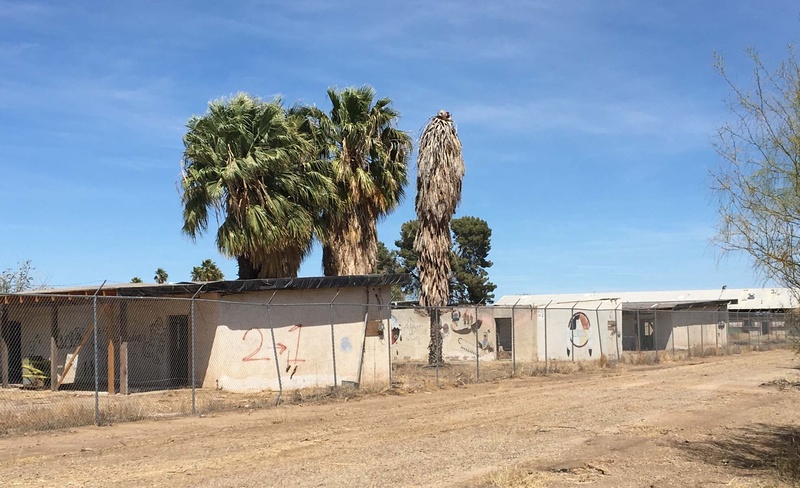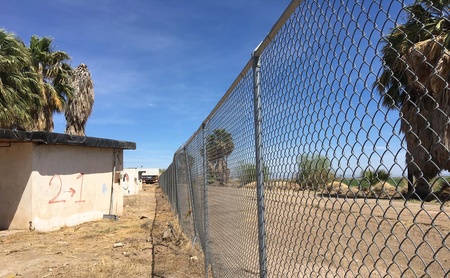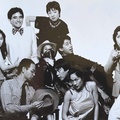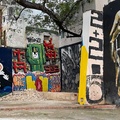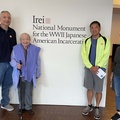There’s a familiar adage that when Nisei get together, one of the first questions asked is “What camp were you in?” I suppose it’s almost like asking where you grew up, yet it definitely holds more meaning.
For example, there’s a strong proprietary nature to individual camps. When I went to Heart Mountain in 1994 for the first of dozens of trips to Wyoming, it was assumed my parents were held there, and I had to reluctantly confess they weren’t. Not to be targeted as an imposter, I was quick to respond that my aunt and uncle were there — just to give me some credibility — and my cousin Steven was born there. It was a connection I used when attending many Heart Mountain reunions and pilgrimages (thankfully, sometimes even with my cousins).
Similarly, when meeting Wyoming residents while conducting extensive research and spending months at a time there, I realized that digging up family camp roots would make more sense to these locals, many of whom had never even been outside of Cody or Powell.
Likewise, when I became interested in Tule Lake after attending my first Tule Lake Pilgrimage in the same year as my first trip to Heart Mountain, I had to use a similar defense mechanism to establish a connection to the once maligned segregation center.
I had secretly hoped I had a family history of some kind of resistance, even though I knew no one in my family was sent to Tule Lake. I thought perhaps my father resisted after hearing a rumor that he named my brother born in camp Victor Katsuji (translated “to win”) because he wanted Japan to win the war. (The more likely explanation was that he finally had a son after five daughters.)
Nevertheless, as a child of the ’60s — with no first-hand experience of what it was like to be incarcerated — I found it easy to glorify resistance. I was overjoyed to hear that my aunt’s husband’s brother, Paul Nakadate, was one of the infamous Heart Mountain Fair Play Committee leaders. However, I was equally saddened to hear that he was shunned by his family for being a draft resister.
During the roughly 20 years that I’ve gone dozens of times to both Heart Mountain and Tule Lake, I had never been to the place where my obaachan, parents, aunt, and seven siblings were held, i.e., Poston, Arizona. I’m not sure if I purposely avoided visiting the camp that my family never spoke about or if the opportunity didn’t arise because for many years Poston did not have a pilgrimage.
It took a recent visit with my five living camp survivor sisters to stamp their names in Ireichō at JANM to reawaken my interest in the camp that held my family. (Read her family experience in Ireichō here.)
It’s true I’d already visited Poston for one of its first pilgrimages in 2018. Back then, I didn’t have any idea what our family barrack number was so I had to call my sister Peggy to ask. Even though she never, ever spoke about camp, the number rolled off her tongue like she was there yesterday: Block 30, 13B-C.
Querying two of my four sisters after our day spent together at JANM, I discovered that our family was housed in two barracks because of our size. My sister Chiyeko was only 5 so had to sleep with my mother and father in one barrack, while the rest of my four sisters slept with my obaachan in a barrack next door.
I also recently learned that when my brother and another sister were born in 1942 and 1943, respectively, it became the daily monotonous chore for my older sisters to wash their diapers by hand, most likely one of the least pleasant jobs for two teenagers in camp.
I had hoped that my sisters’ memories could be further sparked by an actual visit to Poston, but after asking two of them to join me for the 2018 pilgrimage, I was met with little interest. From that visit, standing on the exact spot where my family’s two barracks stood, I got to look out onto the excruciatingly hot, desolate, and dusty landscape that they were forced to tolerate every day.
I couldn’t help but compare it to standing in the wind and dust at Heart Mountain for the first time, surrounded by a group of Nisei men with tears in their eyes as they relived the moment they first encountered the buildings they were forced to call home.
I have since feebly attempted to ask my other sisters to go with me to Poston, but excuses of travel difficulties, physical handicaps, and expense have stood in the way. I would love it if their children and grandchildren could make time to go, but I realize how difficult that is with their crazy work and school schedules. Even a family New Year’s celebration has lately been almost impossible to plan.
This year, I, too, find it difficult to make the time to attend the Poston Pilgrimage, to be held on Oct. 13-14, even when I know that pilgrimages are vital to our understanding of our ancestors’ journeys through hardship, understanding, and forgiveness.
Still, I remain ever hopeful that someday I will be able to rediscover Poston alongside others in my family. I can only wish for more events like this to ensure that our family stories continue to grow and that our ancestors are never forgotten.
*This article was originally published in The Rafu Shimpo on September 7, 2023.
© 2023 Sharon Yamato


